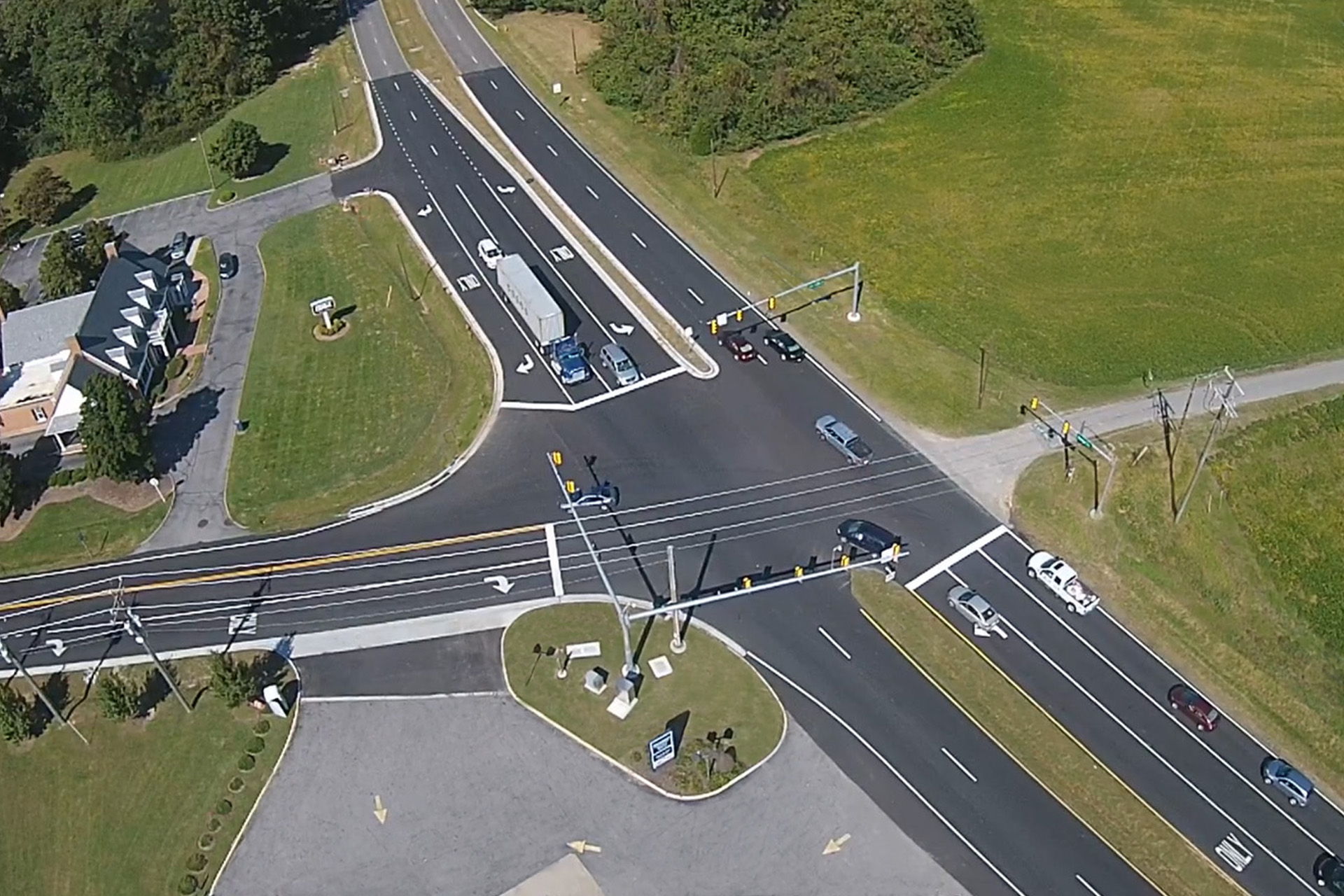VDOT/City of Suffolk, VA
A growing community with a blend of urban and rural areas, the City of Suffolk plays an important role within the regional transportation framework that makes up Hampton Roads and the Commonwealth of Virginia. Bridge Road (Route 17) is a vital link as demand grows and land use patterns continue to change, making the establishment of safe and efficient transportation chains a top priority along this corridor.
Based on a 2011 traffic safety assessment conducted by the city, two intersections along Bridge Road were identified as critically in need of improvements: Bennett’s Pasture Road and Lee Farm Lane. Clark Nexsen’s transportation engineers conducted safety and traffic analyses and determined that the frequent accidents occurring at both intersections were largely due to inadequate turn lanes. Commissioned to provide roadway and intersection improvements and traffic signal upgrades, our team addressed the critical safety issues as well as stormwater management, erosion and sediment control, a detailed transportation management plan, signage, pavement marketing plans, and quality assurance testing.
At the intersection of Lee Farm Lane, our design provided a south bound, right turn lane from Bridge Road onto Lee Farm and a south bound, left turn lane from Bridge Road onto Lee Farm; improved the north bound, left turn lane and provided an east bound, right turn from Lee Farm Lane onto Bridge Road.
At the intersection of Bennett’s Pasture Road, our design improved the south bound, right turn from Bridge Road onto Bennett’s Pasture; provided a new south bound, left turn lane from Bridge Road onto Bennett’s Creek Lane; added a new north bound, right turn from Bridge Road to Bennett’s Creek; improved the north bound, left turn lane from Bridge Road onto Bennett’s Pasture; and added an east bound, right turn from Bennett’s Pasture onto Bridge Road.
Both intersections received new signals with mast arms, new cabinet, controller, and video detection, and were integrated with the city’s interconnect system. Incorporating sustainable design principles ranging from environmental, to social, to economic, the completed project increases vehicular safety and minimized impacts to the surrounding natural environment. A better traffic experience advances the economic goals of the City of Suffolk, and the integration of the new signals with the existing interconnect system has resulted in increased efficiency of traffic flow and reduced engine emissions from unnecessary deceleration, idling, and acceleration.

